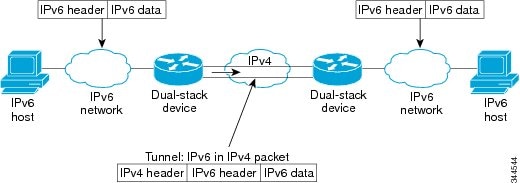

Refer to these for additional specifications, updates and links to older versions of protocol specifications as well as links to more general background information.

For brevity, only the most relevant documents are referenced.
#What is isatap device full#
Please use the references to learn the full details of each mechanism. As such, the discussion of the different tunnel mechanisms is limited to the working principles of the different mechanisms and a few important details. This document provides an overview of available and/or noteworthy tunnel mechanisms, with the intention to guide selection of the best mechanism for a particular purpose. There may be documented limitations as well as limitations that have cropped up in deployment. Some tunnel mechanisms were designed with a particular use-case in mind, others are generic. Some tunnel mechanisms have been abandoned by the community, others have known problems and yet others have shown to be reliable. So many in fact, that it is difficult to get an overview. Various tunnel mechanisms have been proposed over time. Tunnels work by encapsulating IPv6 packets inside IPv4 packets, as shown in the figure. Tunnels provide connectivity between these IPv6 islands. IPv4 Addresses Embedded in IPv6 Addressesĭuring the transition from IPv4 to IPv6, IPv6 islands are separated by a sea of IPv4. Tunnel Information and Control protocol (TIC) Peer-to-Peer IPv6 on Any Internetwork (6bed4) Subnetwork Encapsulation and Adaptation Layer (SEAL) Tunneling IPv6 over UDP through NATs (Teredo) Intra-site Automatic Tunnel Addressing (ISATAP) Connection of IPv6 Domains via IPv4 Clouds (6to4) IPv6 over IPv4 without Explicit Tunnels (6over4) Configured Tunnels (Manual Tunnels / 6in4)
#What is isatap device code#
Code Components extracted from this document must include Simplified BSD License text as described in Section 4.e of the Trust Legal Provisions and are provided without warranty as described in the Simplified BSD License. Please review these documents carefully, as they describe your rights and restrictions with respect to this document. This document is subject to BCP 78 and the IETF Trust's Legal Provisions Relating to IETF Documents () in effect on the date of publication of this document. Copyright NoticeĬopyright (c) 2013 IETF Trust and the persons identified as the document authors. This Internet-Draft will expire on October 13, 2013. It is inappropriate to use Internet-Drafts as reference material or to cite them other than as "work in progress." Internet-Drafts are draft documents valid for a maximum of six months and may be updated, replaced, or obsoleted by other documents at any time. The list of current Internet-Drafts is at.

Note that other groups may also distribute working documents as Internet-Drafts. Internet-Drafts are working documents of the Internet Engineering Task Force (IETF). This Internet-Draft is submitted in full conformance with the provisions of BCP 78 and BCP 79. The goal of the document is helping people with an IPv6-in-IPv4 tunneling need to select the mechanisms that may apply to them. It covers mechanisms in current use, touches on several mechanisms that are now only of historic interest, and discusses some newer tunnel mechanisms that are not (yet) widely used at the time of publication. This document provides an overview of various ways to tunnel IPv6 packets over IPv4 networks. A Comparison of IPv6 over IPv4 Tunnel Mechanisms Network Working GroupĪ Comparison of IPv6 over IPv4 Tunnel Mechanisms


 0 kommentar(er)
0 kommentar(er)
